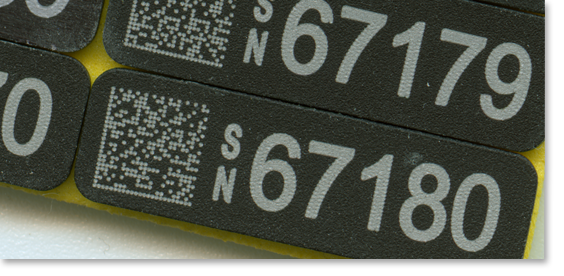Laser Barcode Marking Services
Our laser barcode marking can serialize bar codes such as 2D matrix, Code 39, 128, 2 of 5 and UPC. We can also laser mark UID barcode labels, and offer direct part UID marking as well. Not only can we laser engrave your UID bar code label in short to large quantities, but we also offer UID verification capabilities in house to comply with rigorous UID label standards.
These requirements, established by the Department of Defense, may appear complex, but Focused Laser Solutions makes the process simple. Our vast knowledge of these UID and MIL-STD-130N requirements enables us to deliver and verify guaranteed results for any UID label application. If you need help, or if this process appears daunting, just give us a call at (978) 425-6601 and let us help simplify the process.
We offer direct part marking and can mark customer supplied labels and tags. We also provide TESA label material which can be marked and cut to your specifications. Just supply us with a drawing and we will do the rest.

More about UID
For units valued over $5,000 the Department of Defense mandates all items delivered to them be accompanied with a UII or Unique Item Identification allowing them to track and maintain asset accountability world wide throughout the life of the product. This intelligent and complex system is called IUID or Item Unique Identification. It is a system developed by the DoD that enables personnel and systems to distinguish one item from another, and tracks the location of product within a given organization without any geographic limitation.
The system works by storing and maintaining the products UID or Unique Identification identified by the machine read label or bar code. Each bar code label is permanently fixed or directly marked on the product itself, can withstand the same environmental stress as the object itself and cannot be removed.
The data needed for tracking is created by grouping the manufacturers identification with its specific part or serial number, creating a unique identifier which is then formatted into a particular language enabling for AIT or Automatic Identification Technology to read the information. Then the UII or Unique Item Identifier is taken from the various data allowing the user to identify what and where the item is.

